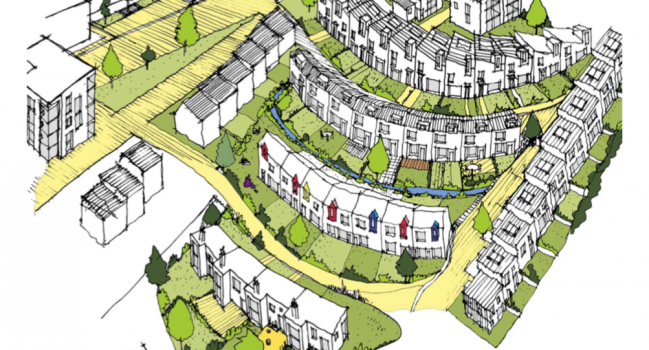Why remould and remake?
In collaboration with Glasgow City Council, we have been tasked to look at Drumchapel in detail, to uncover its weaknesses in depth and to provide solutions that will remedy its issues and expand on its strengths.
Drumchapel is an area containing urban sprawl on the west periphery of Glasgow. Its populace experiences multifaceted social problems.
It is a complex site, with undulating topography, which reduces the accessibility of its neighbourhoods.
Much of its built fabric is run down. Its form contrasts massively with the compact, functional urban streets, composed in a grid structure experienced in central Glasgow and the West end. Neighbourhood areas within Drumchapel are separated by vast swathes of dereliction, buildings are extremely scattered and there is a lack of quality public realm and architecture.
Built as one of many ‘satellite towns’ erected in Glasgow, the ‘hamlet’ is primarily attached to Glasgow via a motor- way.
It was built with the intention to be self sufficient, however what availed was ‘homogenized periphery housing, lacking social facilities, frequent bus links and the social capital of clubs + organisations that were critical to a functional civil society’ (Devine, 2012) .
Housing in Drumchapel was built thick and fast, in response to wartime induced housing
shortages and an eagerness to decentralise the electorate. Flimsy tower blocks, terraced flat blocks and poor quality detached homes were erected. Over the years, insufficiently built fabric has deteriorated, and inhabitants have left and continue to leave (Understanding Glasgow, 2018).
Unemployment levels and incidences of poverty are far greater in Drumchapel than the rest of Glasgow, and a higher level of vandalism is apparent. Furthermore, the numerous empty sites give Drumchapel a feeling of dereliction and hopelessness.
Lisa Irvine


